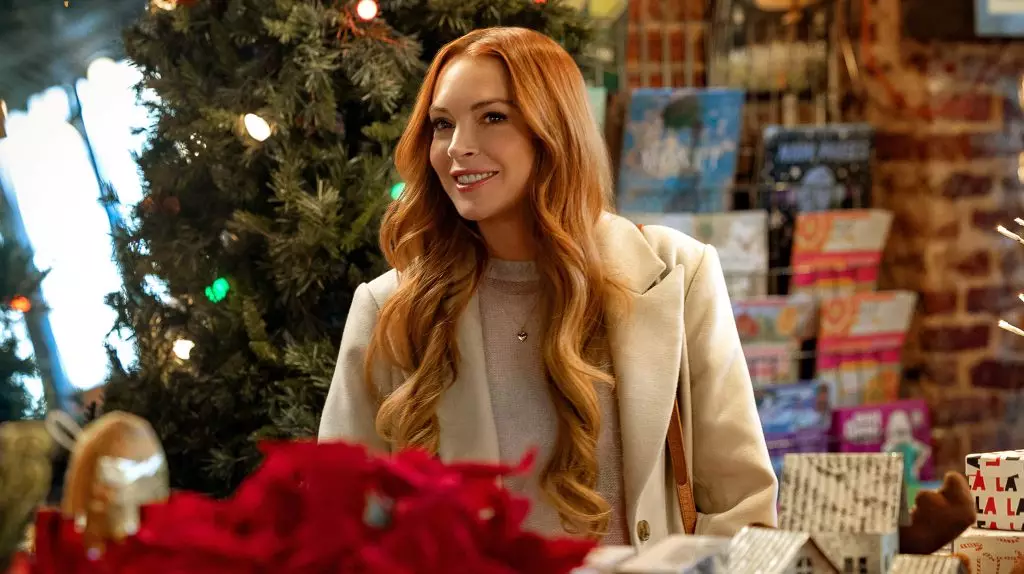In a world that often glorifies pop culture comebacks, Lindsay Lohan’s resurgence through Netflix paints a complex picture. It’s a testament to her resilience, yet it also underlines a worrying inclination toward typecasting. Lohan’s recent interview reveals a layered perspective on her return to the screens—she’s found herself in the warm embrace of romantic comedies, yet her longing for creative evolution is palpable. As the actress reflects, “I can’t do movies like these forever,” it’s a statement that echoes the frustrations of many performers who feel pigeonholed by a successful formula.
Lohan’s connection with Netflix was not just a matter of chance; it was a manifestation rooted in ambition during a global crisis. Amidst the pandemic, she articulated her desire to work with the streaming titan, engaging in a personal journey of intention-setting that is almost refreshing in today’s cynical entertainment landscape. While her Netflix films—like “Falling for Christmas” and “Irish Wish”—have their charm, they risk overshadowing her potential to evolve into more complex roles. Her desire to move beyond the lighthearted fluff is not just an actress’s whim; it reflects a deeper understanding that an artist thrives when challenged.
Breaking Free from the Romantic Comedy Mold
Lohan’s pronouncement to seek more substantial roles is emblematic of a larger industry issue: the repetitive cycle of genre casting. It’s commendable that she acknowledges her current filmography; the desire to make audiences happy is noble, yet it borders on self-limiting. The market often gravitates towards safe bets, but what happens to creativity in this formulaic landscape? Lohan’s drive to shift gears illustrates an urgent need for filmmakers to balance commercial viability with innovation—a dance that too often leaves actors in the wings, waiting for a chance to break free.
As she eyes her role in “Freakier Friday,” a sequel to a film that defined her early career, it raises an eyebrow. Is nostalgia milking Lohan’s past rather than nurturing her present and future? While sequels spark excitement, they also cement the notion that Lohan must rely on her earlier successes to regain relevance. This cycle often stifles artistic growth, reflecting a broader industry reluctance to create original narratives that permit genuine evolution in storytelling.
The Greater Narrative: Artistic Integrity vs. Commercial Demand
The crux of Lohan’s journey rests in her struggle between artistic integrity and the commercial demands of Hollywood. The films may be feel-good delights, but beneath the surface lies a call for substance. Wouldn’t it be more rewarding for both Lohan and her audience if she took risks and embraced more dramatic roles? Could her career be more fulfilling by stepping into narratives that depict authentic human experiences rather than perpetuating the feel-good trope?
By manifesting the desire to break the mold, Lohan challenges the industry to reflect on its approach to female stars, particularly those with complex histories like hers. It’s time for Hollywood to value artistry over mere box office numbers, allowing actors the freedom to explore challenging roles. After all, the boldest stories are often found in the shadows, waiting for someone brave enough to shine a light on them. Lohan’s evolving career could very well inspire others to engage in a revolution of creativity, one where laughter and deeper narratives coexist.


Leave a Reply